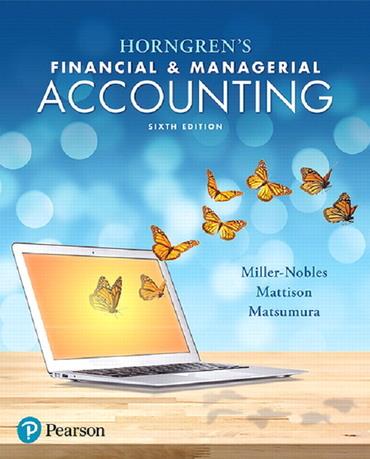Question
DeFleur manufactures bicycles. The bicycles are manufactured in two divisions. In the framing division, the carbon bicycle frames are manufactured. In the assembly division, the
DeFleur manufactures bicycles. The bicycles are manufactured in two divisions. In the framing division, the carbon bicycle frames are manufactured. In the assembly division, the components are assembled to the frame and the bike is ready for sale. There is no market for the unassembled frames and all manufactured frames are transferred to the assembly division. For the purposes of performance evaluation, the framing division transfers the completed frames to the assembly division at the budgeted standard cost of a frame. The budgeted units (units = frames) of production for the framing division is 1,000, all of which will be transferred to the assembly division at the standard full absorption cost.(Note: This is not a transfer pricing issue, think of it more like the transfers that happen in process costing with steps, i.e. Jewel department A transferring to B)
The budgeted costs for the framing division are as follows:
Direct Materials per unit: 10 layers of carbon-fiber at $20/layer $200.00
Direct Labor per unit: 8 hours at $12/hour $96.00
1.Standard variable overhead is applied to products on the basis of direct labor hours at a rate of $4/unit produced.
Budgeted Fixed Overhead is $30,000 and the standard fixed cost per unit is based on the budgeted units of production (Hint: Calculate the Standard FOH/unit).
Actual data for the period relating to the costs are as follows:
The actual number of units produced was 800
Actual Fixed Overhead costs were $30,000
Actual Variable Overhead costs $4,000
2. The framing division worked 7,500 direct labor hours during the year at a total cost of $93,750.
3.A total of 9,000 carbon-fiber layers were purchased and used in production during the year at a total cost of $171,000.
4. Total Budgeted cost for the framing division was $330,000. The total actual cost was $298,750.
Note that all the questions on variance are with respect to the framing division.
Q1
What is the total variance in the actual and static budget?
Q2
What is the direct material volume variance?
Q3
Is this direct material volume variance favorable or unfavorable?
Favorable
Unfavorable
Q4
What is the direct material efficiency variance?
Q5
Is the direct material efficiency variance favorable or unfavorable?
Favorable
Unfavorable
Q6
What is the direct material price variance?
Q7
Is the direct material price variance favorable or unfavorable?
Favorable
Unfavorable
Q8
What is the volume variance in fixed overhead?
Q9
Is the volume variance in fixed overhead favorable or unfavorable?
Favorable
Unfavorable
Q10
What is the sum (net) of all the price, efficiency and volume variances across all the variable accounts (material, labor, variable overhead)?
Q11
What is theactualcost per unit produced?
Q12
What is thestandardcost per unit produced?
Q13
What is the primary (largest) cause of the difference betweenactualcost per unit produced in the framing department and thestandardcost per unit produced?
Volume Variance
Efficiency Variance
Price Variance
Q14
Should the framing department be held responsible for the poor performance of the framing division? In one or two sentences, explain why or why not?
Step by Step Solution
There are 3 Steps involved in it
Step: 1

Get Instant Access to Expert-Tailored Solutions
See step-by-step solutions with expert insights and AI powered tools for academic success
Step: 2

Step: 3

Ace Your Homework with AI
Get the answers you need in no time with our AI-driven, step-by-step assistance
Get Started


